Here’s a scenario for you: You take care of your aquarium by the book but suddenly there’s a strange black fuzzy growth that’s covering everything.

Scrubbing it removes the stuff for a while but it keeps coming back.
At first, it appears as a black mold, often, in a freshwater aquarium environment and it later develops to a beard-like growth.
It’s progressively attaching itself to plants, decor, and rockwork.
Is it there to stay?
Are black algae in the fish tank bad for aquatic life?
After months of fighting this pest, I really got to know it and finally found the cure.
Or cures.
Let’s cut to the chase here.
What causes Black Beard Algae to appear in fish tanks?
Despite its color, Black algae, also known as Black Beard Algae is a member of the red brush algal family in the Rhodophyta division. There are more than 6000 recognized species of red algae, and what we call “black algae” is one of them.
In fact, in some cases, it can actually appear bluish or greenish in coloration.
These algae are usually introduced to an aquarium from outside sources like contaminated plants or even the guts of fish. This happens through its single-celled spores.
Black algae do not only infest aquariums but also pools, ponds, and other artificially managed bodies of water.
They are very persistent and are often difficult to remove because they have a tendency of returning.
There are three development stages of black beard algae:
- It starts out as tiny black spots covering your aquatic plants or the aquarium’s glass.
- The algae then progress to small patches that look like black fuzzy mold; not uniform. Keep in mind that any true aquatic molds will be white in color and will be a type of fungus. If it’s black – it’s BBA.
- If left unattended, the patches will grow to become very thick and hair-like and will remain soft to the touch (hence the name). They may cover most of your fish tank’s decor.
It’s easy to confuse each stage as a different “type” of black algae but they all are practically the progression of the same thing.
Beware reader: Even though black beard algae isn’t harmful to fish, it can destroy aquarium plants. The algae cover the leaves of the plants which blocks their way of receiving incoming light. Without enough light to create life energy for themselves – the plants could die.
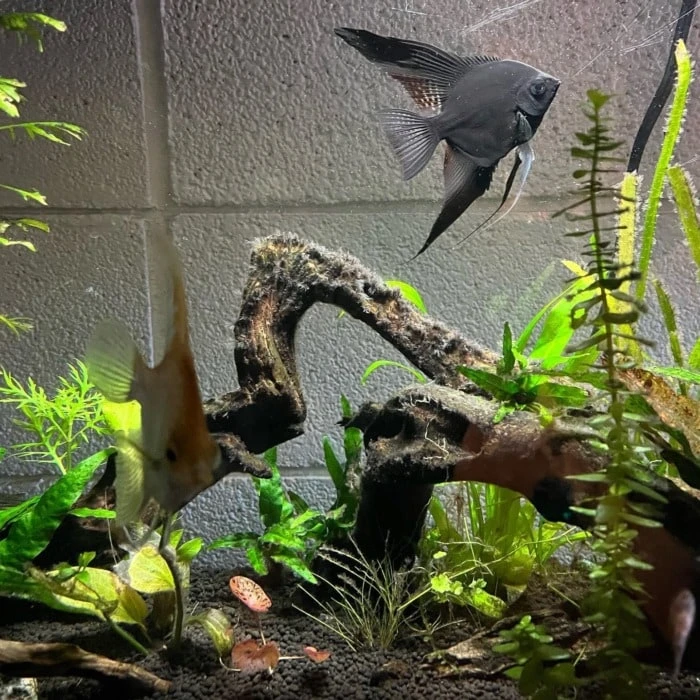
by Ivy_Bells
The truth is you will always get a few BBA spores no matter how careful you are when you pick up new plants or fish. But algal spores won’t be a problem if you don’t allow them to grow and develop.
The two main causes of black algae outbreaks in aquariums are:
- Imbalance of nutrients in the water. Note that I’m saying imbalance and not just “too much”.
Insufficient CO2 in your fish tank is one example.
In that case, your plants simply can’t compete with the algae, because of inefficient photosynthesis processes.
Too much leftover food can result in high phosphate levels which are also favorable to the algae’s growth.
- Improper lighting. Algae takes advantage of the excess light that hits your tank but is not used by your aquatic plants.
Rarely your aquarium’s plant will need over 8 hours of light per day.
However, more often than not, sunlight that’s hitting your tank from a nearby window is often the culprit here. Algae grow like crazy from white daylight but they also really like blue light.
So it’s not a good idea to leave that cool-looking “actinic light” on your aquarium’s LED during night time.
Here are some proper lighting options to consider for a planted tank, that also have customizable spectrums. The link leads to a guide where I give detailed advice on how to approach your aquarium lighting in the correct manner.
Anyway, with the right approach, permanent removal of this type of algae is possible. Algae-eating fish such as the rubber lip pleco, Siamese algae eater, the American flagfish, and the black molly can help immensely.
The issue, however, should be resolved at its core. You don’t really want to rely on algae eaters to manage algae issues.
Here’s what a heavy black beard algae infestation looks like in an aquarium:
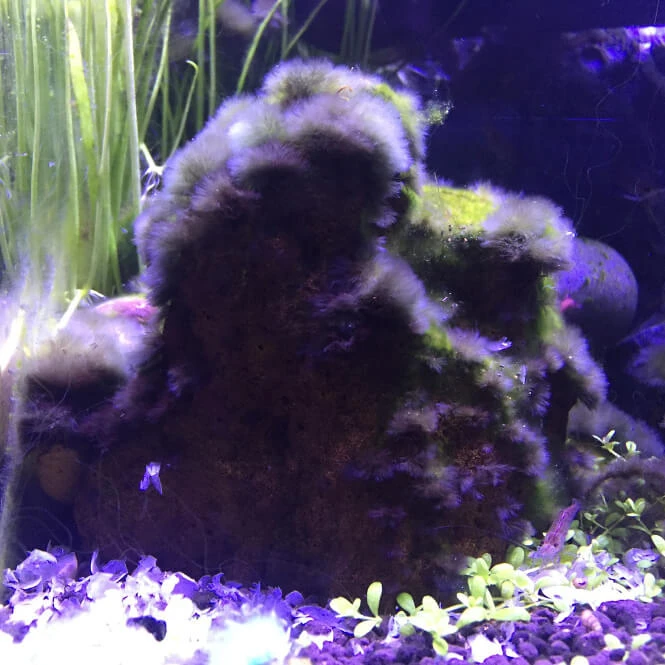
by Grahms
And here’s how black algae appears inside a pool:

How to remove black beard algae from your aquarium once and for all?
Despite being really good at exploiting nutrients, this invader has weaknesses. Even though it took me some time, I did my research and came up with a couple of solutions.
They have all been tested in my or other people’s fish tanks.
I am confident to share them with you.
To get rid of the black beard algae in your aquarium for good you should:
1. Dip all of the affected decor and plants in Hydrogen Peroxide.
A regular over-the-counter peroxide solution of 3% is strong enough to kill black algae.
Peroxide dips are often used for fungi treatment on new plant seeds right before their germination.
Bear in mind that the more gentle live plants in your aquarium like Japanese Moss balls and Anubias may take some damage as well.
For killing the algae on more sensitive plants, I recommend using a 1:3 solution of Hydrogen Peroxide to water. This way the solution will be weaker and spare your plants, but it could take more than one dip to completely rid them of the hair algae.
Anyway, it’s worth taking the risk considering you’ll be removing the nasty black beard algae that are suffocating the plant’s photosynthesis.
If you only have plastic plants you can even use bleach in a 1 to 20 ratio, although peroxide will work too.
Soak all other aquarium decor that is visibly covered in black spots or fuzzy patches for 2 to 3 minutes (use a timer!) and then rinse thoroughly.
The nice thing about peroxide is that it leaves virtually no residue and you can instantly put your plants and rock back in the aquarium. That’s because Hydrogen Peroxide quickly breaks down to oxygen and pure water when exposed to light.
Anyway, I know that soaking in pure peroxide might seem a little radical, but in my experience, this is the best way to remove black algae from any plants or other aquarium decor.
Another less effective but still viable method here would be to spot-dose the peroxide.
That’s done by using a syringe with the solution and squirting some of that right over the affected areas in the tank.
This is done directly in the tank, without removing decor.
However, simply dosing teaspoons of peroxide in your fish tank water won’t cut it for black algae.
Author’s note: Never soak your tank’s substrate. The substrate is where most of the beneficial bacterial colonies live. You want to keep these bacteria alive so that they can keep transforming toxic ammonia into nitrate, which is almost harmless to your pet fish.
2. Reduce phosphate (PO4) in the water.
Phosphates are a byproduct of almost everything that decays in your aquarium.
This includes leftover food when you accidentally overfeed, plant and algae decay, and even fish waste.
However, phosphates will also spike with the use of carbon filter media, hydrogen ion buffer solutions (pH buffers), kH buffer solutions, and aquarium salts.
If these sound like way too many possible causes, know that I haven’t even revealed the main one yet.
Tap water itself.
The local water authorities, however, found a clever way to fight the lead corrosion in the pipes.
Lead poisoning is quite dangerous so they figured that adding some phosphates to the water (which are basically harmless) will prevent said corrosion.
It’s a smart move to test your tap water for PO4, which can be the hidden reason behind your aquarium algae infestation. Unless there are a lot of other aquatic plants in your aquarium to use it up, Black algae thrive in phosphate levels of 1 ppm and above so your testing results need to be rather precise.
One of the more reliable Phosphate testing kits that I would recommend is the one from API, but you can research other brands as well if you have the time.
Anyhow, if you suspect that your tap water is the issue, then you have two options:
- Find another source of water for routine water changes – Distilled or purified water with reverse osmosis (this is a guide I wrote on which one to use) will surely starve your black algae.
If you revert to this solution know that this water needs to be remineralized before adding it to the aquarium.
That’s because water purification removes all minerals – the bad AND the good.
Remineralization adds back the good minerals and the water becomes usable for aquariums again.
Anyhow, a phosphate-free remineralizer I found, that does wonders is Seachem Equilibrium.
- Introducing phosphate absorbing media to your filter – If you end up getting a PO4 absorbing media, make sure that your filter turns the water in your fish tank at least 5 times per hour. A canister filter may be a good option here.
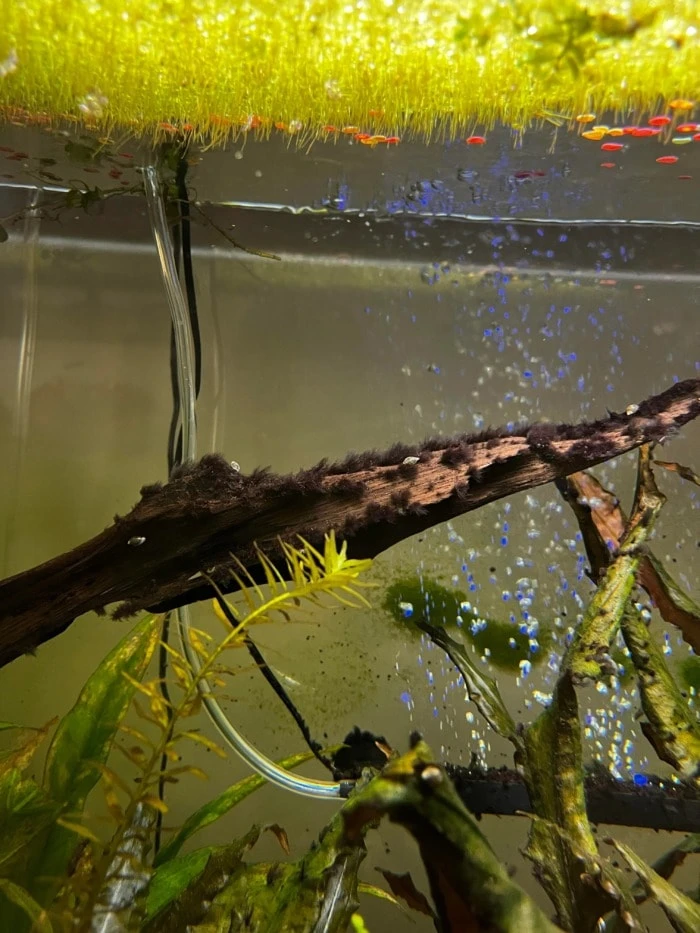
by coralkat
If your aquarium water tests read high PO4 and the tap water shows values below 0.25 ppm (which is considered safe) there are a few ways to lower it by eliminating the causes.
To lower phosphate levels in an aquarium you can:
- Add fast-growing floating aquarium plants – most freshwater floater plants have an enormous hunger for nutrients in the water column of your fish tank. They grow super fast and therefore need a lot of food, which includes Phosphates. I’ve got a quick list of 16 floating aquarium plants that you can check out.
- Replace current fish food – PO4 is used in the making of flake foods, but there are ones containing less phosphate. Elos is a brand that comes to mind as I know for sure that they make efforts in adding as little phosphate as possible.
- Feed your fish sparingly – uneaten food will eventually release phosphate and encourage black algae growth. Dosing meal portions is vital and you should take the number and type of fish you have into account.
- Clean the tank more often – As redundant as it may sound it’s a good idea to go one further on this one. Food and other debris are the usual suspects for phosphate build up in your water.
Always clean filter media with dechlorinated water not to kill any beneficial bacteria that live on it.
- Clean the filter – Filters are known to hold enough muck and residue that will eventually spike the levels of PO4.
- Opt for a carbon media with phosphate absorbers – This is for freshwater fishkeepers. Saltwater carbon filter media is often made in a way that prevents phosphate build-up by default.
- Review your water conditioners – These often have PO4 in them. Everything that treats water from buffers to pH alteration products contains a good amount.
Do yourself a favor and research them well, before buying.
3. Feed your plants by boosting Carbon Dioxide.
Whenever the CO2 levels in your aquarium become low your aquatic plants find it hard to extract the needed amount from the surrounding Hydrogen carbonate.
Black algae, however, is really good at that and it will out-compete your plants and thrive.
When this happens your pH will elevate, which is a really good sign that a poor CO2 level is your problem.
In an aquarium low on carbon dioxide, the algae will be stiffer to the touch and even the Siamese Algae Eaters won’t bother munching on it. By raising the CO2 levels in your aquarium you give your aquatic plants a kickstart to the competition for nutrients and the eventual starvation of the algae.
CO2 is a vital part of the process of photosynthesis and is one component that, when ramped up, actually speeds up the process.
With increased rates of photosynthesis, your aquatic plants will become competitive at sucking up nutrients in the water that would otherwise go to the black algae.
Soon after the effect takes place the BBA will become weak and therefore an attractive snack for your algae eaters, if you have any.
Two stones with one bird, so to speak.
Aside from a gas cylinder and a CO2 regulator with functioning solenoid, there’s another indirect way of allowing your plants to get more Carbon Dioxide in a fish tank. That’s a product called Seachem Flourish Excel.
The active ingredient can be toxic to fish upon continuous use.
It basically works by eliminating the built-up biofilm on plant stems and leaves, which allows them to draw CO2 from the water more efficiently.
If you have fish and invertebrates in the tank, go for half the recommended dose and treat it as a temporary solution.
Just in case.
Also, there’s another algae remover called “No More Black Beard”.
However, this algae remover has a similar active ingredient to Excel, so if you end up getting it, be careful with the dosage as well.
Anyway, back to CO2 injections the classic way, you should aim for 20 to 25 ppm of CO2, granted that your Oxygen levels are in the healthy range.
Don’t forget that carbon may spike your tank’s phosphate, but that’s not an issue when injecting CO2.
The benefits of algae control here significantly outweigh the disadvantages.
4. Introduce black beard algae eaters to your fish tank.
The true Siamese Algae Eaters (SAE for short) are known to feed on black algae.
There’s a catch, though.
Hard, unappetizing algae is a result of low carbon dioxide in planted tanks.
They use the limescale precipitate in a process that hardens their wall cells.
This method should be combined with either the peroxide soak or the CO2 injection method. Both methods will render the algae weak and soft enough for your SAEs to feast on it.
Many people I know report that after weakening the algae a sudden interest from their algae-eating tank pets occurs. That being said, true Siamese Algae Eaters (visit the link for more info on this fish) are not your only friends when it comes to an appetite for algae.

by rtchal
You’ll be surprised at how diverse the reports are on what else eats black beard algae in aquarium habitats.
Most plecos should eat the stuff by definition too, with the rubber lipped ones doing it at impressive rates (link to a complete guide I wrote on those). When the black algae are in their early stages like black spots or small hairy patches even fish with smaller mouths like the Otocinclus would eat them.
Here’s a full list of reported black hair algae eaters:
- American Flagfish – Jordanella floridae;
- Black Molly – Poecilia sphenops;
- True Siamese Algae Eater – Crossocheilus siamensis (young ones, as they pick the habit of feeding on the stuff);
- Chinese Algae Eater – Gyrinocheilus aymonieri (I don’t recommend getting this fish because it becomes too aggressive with age);
- Twig catfish – Sturisoma panamense;
- Bristlenose pleco – Ancistrus spp.;
- Rubber lipped pleco – Chaetostoma formosae;
- Pigmy suckermouth – Otocinclus spp.;
- Rosy Barb – Pethia conchonius;
- Cherry Barb – Puntius titteya;
- Common Goldfish – Carassius auratus;
- Panda Garra – Garra flavatra.
The Amano shrimps are also avid black algae eaters.
Side note: Let me know in the comments if you’ve seen other fish feasting on BBA, so I can expand this list further.
I have written an extensive guide on the best algae eaters in the aquarium-hobby where you can learn more about each of the species listed above.
5. Boil it away with heat treatment.
Algae like warm but not too warm.
Heating up the water is another very effective way of getting rid of the stuff, but you’d need to relocate the inhabitants of your fish tank first.
Find good temporary storage for your fish and live plants.
When I tried this, I left my driftwood and a couple of fake plants in my aquarium as they were all covered in black beard algae.
If it’s just your driftwood that is having algae on it – you can take the piece out of the tank and “boil” it separately.
The whole procedure took me only an hour and a half.
Put your heater at 110 °F to 120 °F (45 °C to 50 °C) and wait it out.
As you can see it’s not literal boiling but just bringing the water to a very high temperature.
I had algae on my live plants as well so after I removed them I dipped them in hydrogen peroxide.
The heat will burn the black algae causing it to eventually die off or get eaten by your algae eaters soon after.
My tips for extra efficiency:
- I would not recommend using water from the fish tank in the temporary one if you’re about to execute the heat method.
Some algae spores might still be present.
The good thing is that the removal will only last a little over an hour, so no cycling and all that is needed.
- While you wait for the water to heat up you can add a couple of spoons of peroxide.
I did a ratio of 1:150 peroxide to water.
Don’t worry, the peroxide dissolves and will not harm your fish afterward with that ratio.
The algae, however, will most likely be permanently destroyed.
- Clean the gravel before the heating.
Get rid of any leftover food or fish waste.
6. Cut out the photosynthesis of the BBA.
This one could be risky if your tank is heavily planted.
Black algae need light but so do your live plants.
This is also the method that was the least efficient for me, but I feel like it’s worth mentioning.
What I did was turn off the lights on my aquarium for 3 days straight.
I made sure no sunlight from the windows could reach the tank too.
After that, I adjusted the daily exposure to light to about 6 hours (instead of the regular 8).
It took the algae more than a week but it did start to disappear.
However, this was not a permanent solution to my problem.
In the rare case where overfeeding your planted aquarium with light is the cause of your BBA issue, it will work for you.
Bear in mind the light needs of your plants – if they are low to medium-light plants then it would probably not damage them.
Prevention of outbreaks – How to never get black algae again

If you got to this part of the article you probably have the answers to that already.
But it’s important to follow this checklist once you’ve defeated the unwelcome invader.
Black beard algae WILL take advantage of any favorable conditions.
To prevent BBA from ever coming back to your aquarium I strongly recommend that you pay attention to:
- Overfeeding – everyone can get carried away with that. I have.
After all, we do care about our pets and want them to feel good, the main part of which is being well-fed.
However, excessive food is also food for algae. Do research on the fish you have and feed them accordingly.
If you’re not confident that you will never overfeed again, I can recommend getting an automatic feeder. Eheim offers one, that’s actually pretty reliable.
If you want to see how the device looks, Amazon has it. There’s also the advantage of not having to worry about feeding when you’re out of town.
- High PO4 levels – You don’t want anything above 0.25 ppm of free Phosphate in your aquarium. If Phosphate is being introduced to your tank in some way you can’t control, there should be enough live plants inside to use it up, instead of the algae.
- Aquarium hygiene – You are probably eye-rolling, as I know everyone is religious when it comes to cleaning. Still, all waste products, even in your filter can cause nutrient imbalance.
- Excessive light – Keep the lights on as much as needed but no more. Investigate your plants’ needs.
- Low CO2 levels – Carbon dioxide is vital for your live plants. With the right levels, they will be able to function properly and effectively use all other nutrients they need.
Healthy plants will outcompete any algae.
- The right equipment – Once you get rid of the intruder you can count on gear to prevent future outbreaks.
Killing algal spores before the bloom occurs is your best bet. Ultraviolet sterilizers use high-energy radiation that damages the DNA of the spores, preventing them from explosively multiplying (visit the link to learn more about that). - Live plants from unknown sources – You could get a plant that carries black algae (though not visibly) even at a big pet store. It’s not paranoid to run them through a light disinfection procedure before adding them to your fish tank.
Use Hydrogen peroxide and water in a 1:4 ratio and let the new plants soak for a couple of minutes.
Better safe than sorry.
- Questionable pet store water – Whenever you buy a new fish, use a net and don’t just pour the water from the bag in your aquarium.
It would be even better if you quarantine the fish for a while before adding them to the tank.I usually wait for 24 hours.
My Conclusion
Black algae is a menace and also one of the most stubborn algae out there.
However, this does not mean we should tolerate it.
And if you take precautionary measures, you’ll never have to deal with it again.
And now I have a question for you.
Did my advice help you?

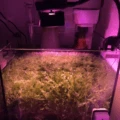
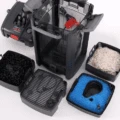

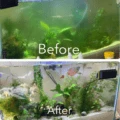
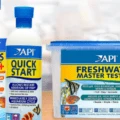

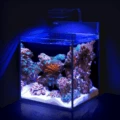


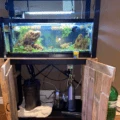
I have had an on-going problem BBA for some time and have tried Flourish Excel in the past and found that it was certainly good at reducing the amount of BBA in the tank but never seemed to kill it completely. I also found that I was getting fish deaths after using it, in particular clown loaches and catfish. I spoke to the pet shop where I bought the product from and they said that fish that had plates rather than scales, such as the catfish and the loaches were vulnerable to this product so I have stopped using it. I see that you still recommend it so I would be interested to receive your comments and those of others. I will take the recommendations about the phosphates on board and try to reduce these.
Hi Geoff.
Yes, Excel does have such tendencies, so I’d recommend using it in half the recommended dosage and in conjunction with other methods. This way you’ll get maximum efficiency while taking a minimal risk.
Hope this helps.
Hey there Momchil.
Excel is nothing but Gluteraldehyde. A nasty biocide which offers almost no benefit to plants as a carbon or co2 supplement.
These products have a half life of 10 hours with total disassociation at 26 hours. Using a standard dose, gluteraldehyde releases 2.2ppm of carbon over the first ten hours. So if the rate of dissolution were linear (which it isn’t) this would only release 0.2ppm per hour. Atmospheric Equilibrium from gaseous exchange provides 3-5ppm of co2 at pretty much all times. So that means that doing absolutely nothing provides 15-25× more than “liquid carbon”.
It has algecidal properties, but those same properties which kill algae have been proven to have acute toxicity for plants and livestock in the wrong dose and, by its function as a protein fixative, causes accumulative damage on a cellular level to plants and livestock in the standard dose over time. Any perceived growth is either a case of confirmation bias or survival growth as the plant attempts to respond to the damage being caused.
Exposure in units less than used in aquariums has been shown to have detrimental effects on the respiratory systems of the user as well…aside from being a contact irritant..
Simple h2o2 (hydrogen peroxide) is equally as effective in algae treatment without the ill effects of Gluteraldehyde.
I did see that you do promote the use of h2o2, which is a good thing, but I challenge you to do some extensive research on Excel/Glut. It might just change your view of Excel and recommending the use of it to other folks as well. 🙂
I have links to articles if you would like to check them out.
Hi Curt,
You do seem very knowledgeable and I can only assume you work somewhere in the chemistry field.
Therefore thank you for your input. I try to recommend the thing as little as possible, but with aiming to provide complete info I sometimes feel obligated to mention it, because I’ve seen it work. Also, I always try to note that people should use lower than the recommended dose and that fish deaths do happen.
“Any perceived growth is either a case of confirmation bias or survival growth as the plant attempts to respond to the damage being caused.” How do we prove that it’s either of those? This I can’t comment on, because many swear it works for them and I have seen it significantly improve growth and coloration too. This by itself was enough for me to assume that it does the job.
Out of sheer curiosity, may I ask how you found this blog post? You seem like a pro in this matter and not someone who would look up info on algae removal 🙂 It’s fine if you don’t feel like answering.
Anyway, thank you for your valuable input again. This comment helps me and others reading this post to get a better understanding of things. I also edited the wording and added more info, and made it stand out more with color.
Very well said! Thank you for sharing your knowledge. Many people reach for chemical products to fix whatever is happening in their aquarium, but this is illogical because anything from a bottle is largely unnatural in the aquatic world and these products have a very short life span. For example, bacteria boosters literally contain next to none actual beneficial bacteria as bacteria cannot survive in that condition very long.
Thank you for your input, Meg. Your comment made me realize I need to actually respond with my findings instead of just saying “ok thanks, I did my research”.
I found the article Curt copy/pasted his entire response from and though I did not find any peer-reviewed scientific papers confirming his words in the context of fish keeping, I agree with you both that chemicals should be used only when it makes sense.
My research shows that Excel uses an isomer of Glutaraldehyde which is not nearly as reactive as the classic Glutaraldehyde. An isomer means molecules with identical formulas but distinct structures and isomers do not necessarily share similar properties.
Making a bold statement such as “Excel is nothing but Glutaraldehyde” is misinforming at the least. Yes, the active ingredient in Excel is somewhat reactive (if you use it in higher doses it may kill more sensitive fish) but it’s definitely not “nothing but Glutaraldehyde”.
The lady who wrote the article Curt is citing makes an assumption about the dose and how much CO2 that would release. However, given the molecule’s structure (formula: C5H8O2), that assumption is grossly oversimplified and very likely inaccurate.
Furthermore, the active ingredient acts as an algaecide that kills the accumulated biofilm on plants, which makes access to CO2 way easier for the plant.
Essentially, Excel does release some carbon but what makes it work is that it helps aquatic plants get it in a more efficient manner.
I think what the lady aimed to prove was that it’s not a good way to word it like “Excel is a liquid source of Carbon”, though that is technically true. Pressurized CO2 injections provide times more carbon for example.
I don’t think that pointing out that the product is a contact irritant leads us anywhere… Using vodka is a very effective method of safely adding carbon to an aquarium system too. However, getting vodka in your eyes is also not the best of experiences.
The dose is what’s important.
Respiratory issues could be present with Glutaraldehyde, yes, but that’s when actively inhaling the thing with prolonged exposure (something no one in their right mind would do I assume).
My point here is that I am against publicly shaming products that work when used wisely. If a product is not absolutely human-error-proof it does not mean we should bash it.
On another note, I have to disagree about the use of chemical products in fish keeping being illogical because it’s unnatural. You can’t realistically expect to have a piece of the ocean (or a lake) in a tank at home without the aid of some products at least.
I mean, if you’re all about the natural methods then you’d have to boil 10 gallons of tap water for more than an hour to rid it of 1 ppm of Chloramine, instead of using a commercially available water conditioner. All due respect but do you do that when changing aquarium water? Or do you simply add a little Prime or whatever you’re using as a dechlorinator?
People have been successfully keeping fish with the aid of these products for decades.
On your comment about bacteria boosters – my experience with these products shows the complete opposite. You can definitely cycle a tank 4 to 8 times faster by using bottled bacteria. Nothing unnatural in that.
Also, I am not sure you’re using the word “literally” appropriately. Why wouldn’t bacteria survive in a bottle? Could you please provide some sources on that claim? Bacteria are really good survivors, they are all around us… If they are delivered in an adequate solution there should be no problem. The product has a relatively short shelf life, yes, but that’s with all live cultures.
Hope this clarifies things a bit and shows how important is to understand that not everything is, crudely put, “black or white”…
Regards
Excel contains an isomer of gluteraldehyde so studies on gluteraldehyde would not apply as the structure of a molecule is central to its behavior.
Thanks, Hegemon, for pointing that out.
During my research on the subject, I came to the same conclusion and explained it in detail in my rather long reply.
Regards, Momchil
Hi I have a 120l tank with platties, guppies, tetras, corys, khulis and a bristle nose. My tank at the moment also has 20-40 fry of various age. I have a severe BBA problem. I thought about the bleach but don’t want to kill off any baby fish. I thought the best way to rid the entire tank would be the “boil” method but obviously won’t be able to catch all my fish!! What method do you think would suit my tank best?
Hi Sarah.
You did not mention anything about plants in your tank?
Since your setup is quite full and you have a specific case because of the fry I’d recommend a more gradual way of fighting the black algae (to avoid tearing down the tank).
If I were you I’d probably introduce more aquatic plants to it and start dosing Flourish Excel. Live plants will strip nutrients from the water and the algae won’t be able to use them up. Seachem Flourish Excel will introduce carbon, which will help the plants to employ said nutrients.
About the plants – get a floating plant. Floaters act as literal nutrient sponges because they grow really fast and need plenty. You’ll need to occasionally remove some of the growth from the surface, but it will be worth it. Floaters also provide some neat shelter for fry and also a better look to the fish tank. It will also block excessive light that the black beard algae use.
So:
1. Get a floating plant + some low light live ones
2. Dose 50% of the recommended dose of Flourish Excel. 50% because you want a smooth transition in water contents, because of the fry. Usually, the whole recommended dosage would be fine, but I would play it safe because of the fry.
Hope this helps!
Hi. Thank you for your reply! My tank is heavily planted with live plants and has around 2/3 cover with floating plants (water lettuce and guppy grass)
I think the problem started when we were away for a week a while back and the light timer had stopped working, so the tank had constant lighting for around 4 days. Also, my 16 year old son was in charge of feeding so there may have been a possibility of over feeding.
I’ve tried keeping the lighting off for a week or so but doesn’t seem to make much of a difference, I just seem to be fighting a losing battle here.
To be completely honest, I didn’t mind the algae at first so just left it. Had I realised then how much of an issue I was going to have!! Hindsight is a wonderful thing!
I think my only option at this point is either learn to live with it or strip down my tank. I just hope choosing the latter isn’t something I’m going to regret 😭
Hehe…
Don’t give up just yet.
Do you inject CO2? If not – it can help.
Do you leave the tank with a blue light on at night? Don’t!
Blue light is heavily employed by algae and it should be kept at the bare minimum in planted tanks (read about 10% of the diodes on your fixture should emit a blue spectrum).
Check your lighting and see if there are too many blue diodes.
Combine the aforementioned with a fasting your fish. Feed every other day. Your fish will be fine with that schedule. I’m sure you’ll be alright but I’m obligated to mention it anyway, in case someone else reads our discussion – feed just about enough and try not to put excessive food in the aquarium.
With that schedule your fish will poop less and less food will degrade in the aquarium water meaning fewer nutrients for the algae.
Good luck!
Really thorough article. Thank you. I have taken your advice and bought a Chinese Algae Eater. I’ve also found some information leading me to believe they are very aggressive. I have a 30L tank with 3 various size platies in it. Any thoughts if they will be ok or if I should take the CAE back? Thanks again.
Hi Tyrone,
If you have the opportunity to return it – do it. CAEs get fairly aggressive with age. True, they eat lots of algae when juveniles, but when they mature they turn into spawns of hell.
Any of the other algae eaters that I’ve listed will be a better fit, to be honest.
Hope this helps
Thanks very much. It’s been in the tank for a day now and my platies seem distressed. I’ll take it out. Hopefully the shop has other options else regular cleans with have to do. They definitely have black mollies. Would they be ok with platies (x3)? I have a 30L tank.
Hi, sure, just make sure to get females (x3) or a male and 2 females.
I already have 3 platies. Not sure what sex they are as 2 were born in my tank. I’ll just try and get a female black mollie. Hopefully that’ll do the trick.
100% When my CAE matured he turned into a tiny torpedo and started battle-ramming all the other fish in the gills.
Hi Stephanie,
I know right!
Guys just get Siamese algae eaters. You need to differentiate these from Chinese algae eater. Tried it worked like a charm. Give it some time , mine totally cleared and still is clear in bout a couple of months. Bad case of bba all over my hardwood , rocks – well just everywhere n this is a permanent solution. Trust me
Thanks for your input Fishy.
It’s true – if everything else is in the norm SAEs would do the job. However, if you’ve developed a liking to one of the other species that eat black beard algae you should totally go for one regardless, as there are actual reports of them clearing the thing up.
Are there any snails that would eat black algae and good for your tank.?
I believe I answered that question above.
Are their any snails that eat black algae?
Hi Brandon.
Sure – Ramshorn snails will eat it. Slowly but surely they’ll get rid of it.
Hope this helps 🙂
I have bristlenose and they aren’t eating the black alge. I’m going totry one of your other methods
Hi Judy,
Yes, bristlenose plecos are not 100%-algae consuming fish. They will, however, eat it if it’s appetizing to them.
Black algae is unappetizing and stiff when there’s not enough CO2 in your system. If you don’t have many plants – go get some ASAP. You should then introduce some CO2. As I’ve mentioned in my article the fastest and easiest way of doing that could be through Seachem Flourish Excel.
Follow the instructions and you’ll be good.
Hope this helps!
Black beard algae are something you can definitely get rid of with the right approach. Good luck.
How can I use SeaChem Equalibrium as a treatment to kill off the blackbeard algae with a 20 gal tank, no live plants, and a simple penguin biowheel filtration system (wheel stopped turning a long time ago but tank still filters)What are Dosing amount and steps? Thanks
Hey Kelly,
Simple – You’d have to use RO/DI water for water and remineralize it with Equilibrium. Add 1 tablespoon of Equilibrium per 20 gallons of purified water as per their instructions. Use this water for water changes and keep track of the Phosphate.
Hope this helps!
I tried 3% Hydrogen Peroxide. it killed ALL my Anubias in 3 day after only dipping for 10seconds. Have tried everything never had this black (like paint) NOT BLACK BRUSH. have had tropical fish for 60 yearsso I am giving up.Doug
Hi,
Doug, you should’ve diluted the hydrogen peroxide with water (1:5 or less), and not use PURE H2O2…
As for your “black paint” algae problem – try getting MORE plants and make it heavily planted, then pump CO2 in and then get an algae eater (click here to see some unpopular options that may work).
You’ll be attacking the black algae on 2 fronts this way and though this combo recipe is a bit more work it is almost certain to get you rid of it.
Hope this helps!
I also thought we need to use pure hydrogen peroxide, until I read this comment. I think the ratio wasn’t mentioned on the original “how to” guide…I am glad I read this!
I have that same problem
I have added garrar to the tank and they are eating the black beard algae. Thanks for the info.. I will be following your instructions!
Hi Carlotta,
Did you mean Garra Rufa (doctor fish) by any chance?
That’s really interesting and I haven’t heard of that!
Thank you for your input, I will be sure to update the article with this information upon your confirmation.
Looking forward to hearing from you. : )
Isn’t the “false flying fox” part of the Garrar family. Some think the ” true flying fox” to be part of the same family but they aren’t. However true flying foxes are very good BBA eaters.
Thank you for your input, Dave!
I hope your experience proves valuable for someone
Happy fishkeeping.
My tank is mostly guppies. Is garrar an aggressive fish? Not much for aggressive fish in my tank. I have a Japanese Gold algae eater. I give him the algae wafers so he isn’t much interested. Just as long as this black algae doesn’t kill my fish. Just had a nightmare fish incident. Got up for work at 10:30 PM. Bubbler had died. No back-up. Everything is closed because of the virus so I had to wait until morning to get another bubbler. Lost close to 40 pregnant female guppies due to lack of air. Japanese Algea Eater had two dead female guppies stashed in his fish house. Bad fish. I bought 2 bubblers this time. Poor fish. Is this a felony?